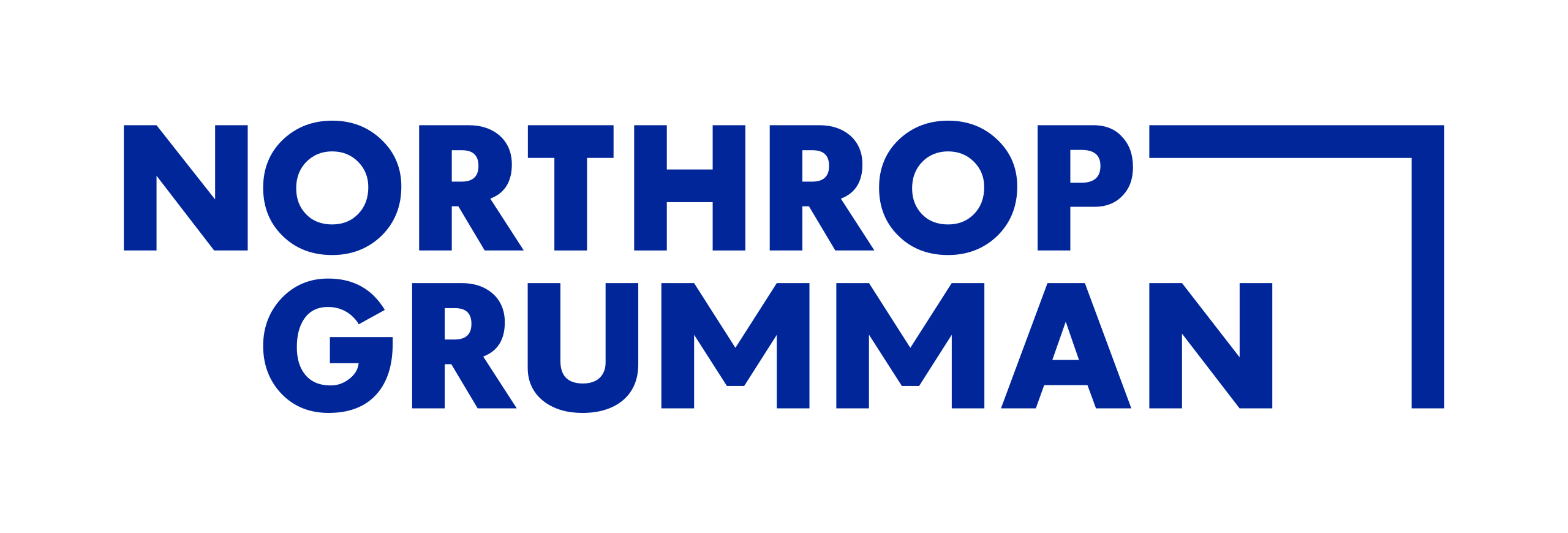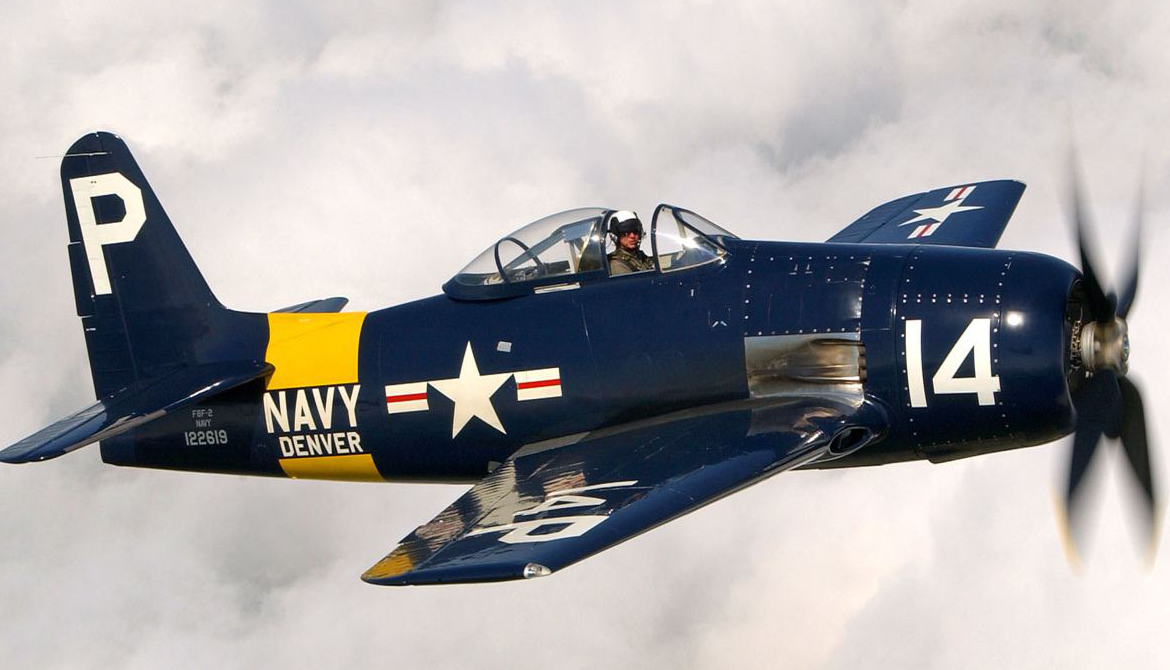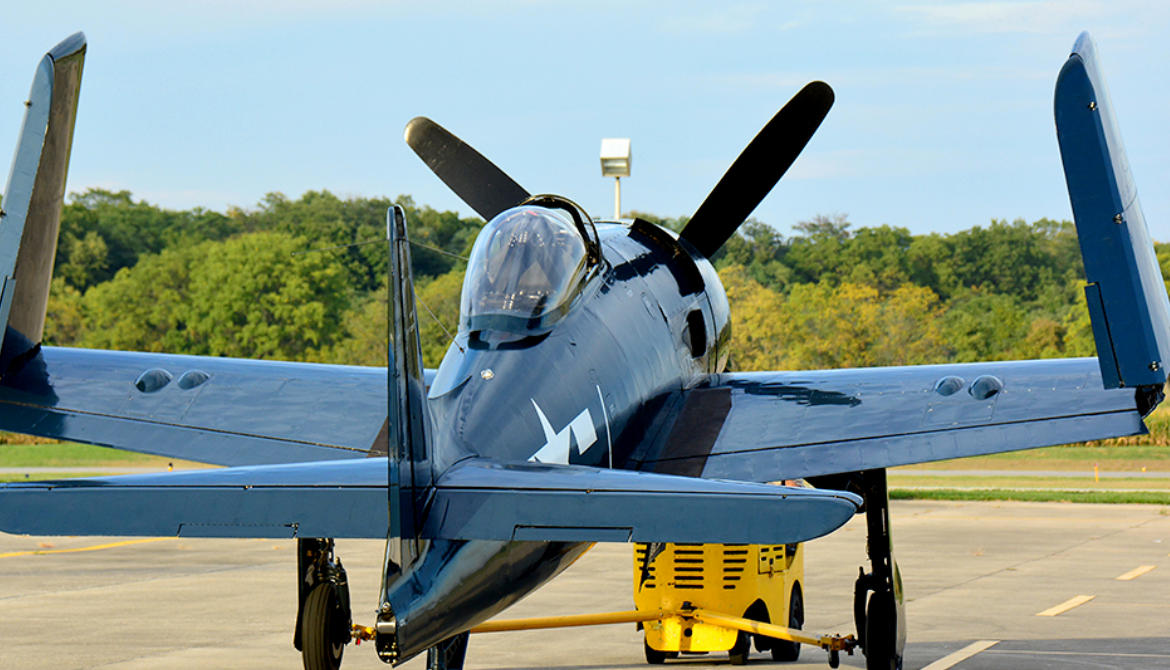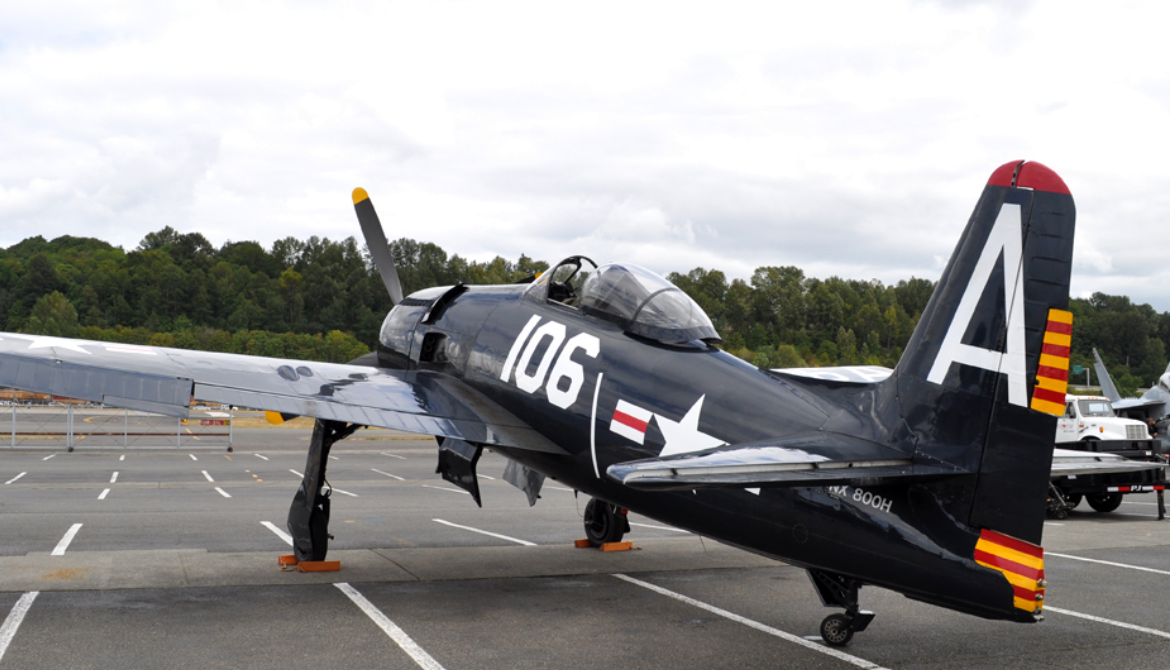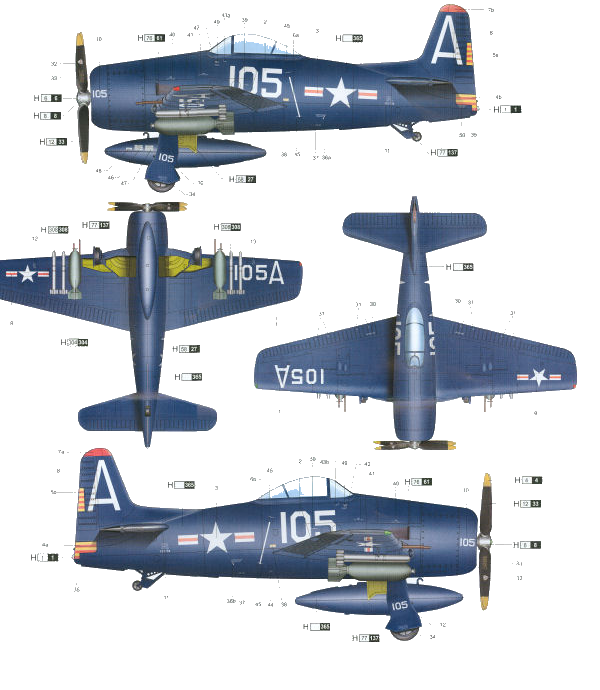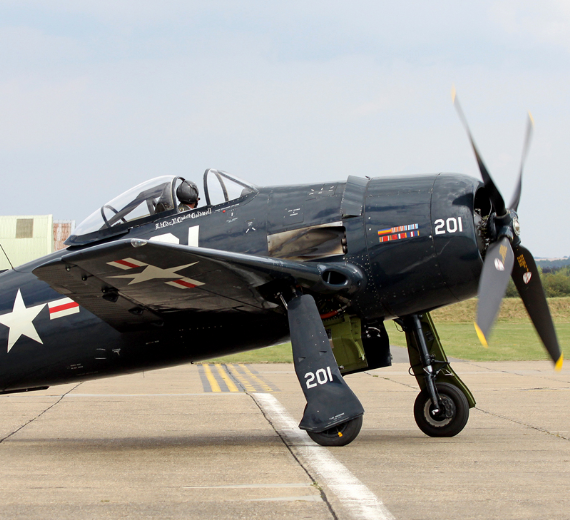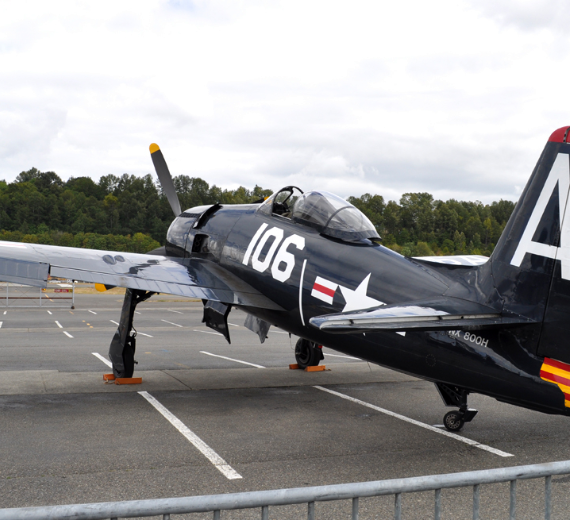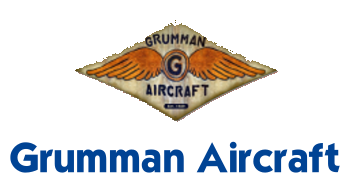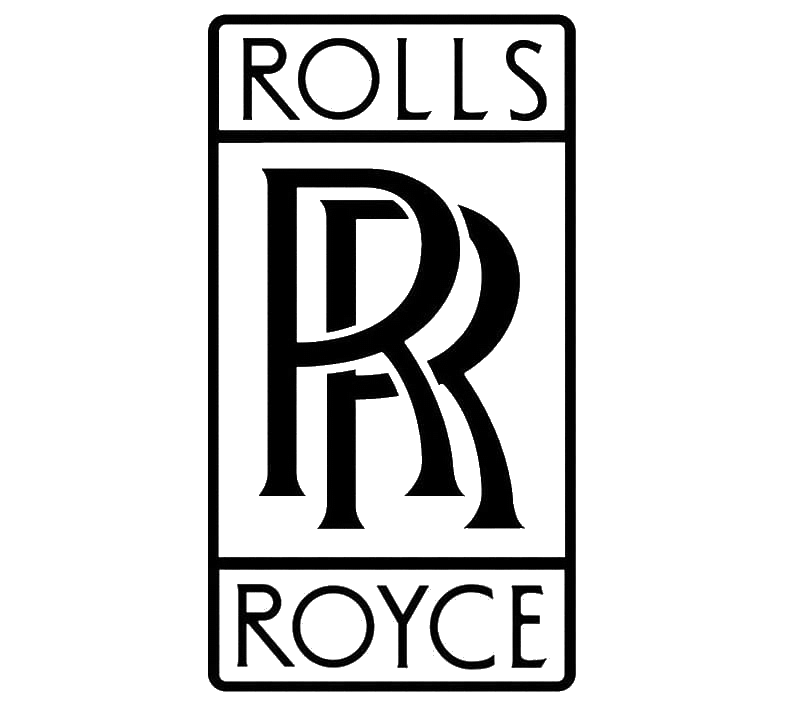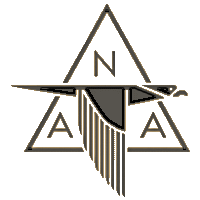Grumman Aerospace Grumman F8F Bearcat
Role Fighter aircraft
National origin United States
Manufacturer Grumman
First flight 21 August 1944
Introduction 21 May 1945
Retired 1963 VNAF
Status Retired
Primary users United States Navy
United States Marine Corps
French Air Force
Royal Thai Air Force
Number built 1,265
.
History Grumm![]() an Aerospace
an Aerospace
Grumman F8F Bearcat
The Bearcat concept began during a meeting between Battle of Midway veteran F4F Wildcat pilots and Grumman vice president Jake Swirbul at Pearl Harbor on 23 June 1942. At the meeting, Lieutenant Commander Jimmie Thach emphasized one of the most important requirements in a good fighter plane was "climb rate"
In 1943, Grumman was in the process of introducing the F6F Hellcat, powered by the Pratt & Whitney R-2800 engine, which provided 2,000 horsepower (1,500 kW). The R-2800 was the most powerful American engine available at that time, so it would be retained for the G-58. This meant that improved performance would have to come from a lighter airframe. To meet this goal, the Bearcat's fuselage was about 5 ft (1.5 m) shorter than the Hellcat, and was cut down vertically behind the cockpit area. This allowed the use of a bubble canopy, the first to be fitted to a US Navy fighter. The vertical stabilizer was the same height as the Hellcat's, but had an increased aspect ratio, giving it a thinner look. The wingspan was 7 ft (2.1 m) less than the Hellcat's. Structurally, the fuselage used flush riveting and spot welding, with a heavy-gauge 302W aluminum alloy skin suitable for carrier landings.[3] Armor protection was provided for the pilot, engine, and oil cooler.0
KmTake off Distance
0
mRange
0
MachAircraft Speed
0
Max Crew
Photo Gallery
Grumman F8F Bearcat


Grumman Aerospace Corporation
Grumman F8F Bearcat
General characteristics
- Crew: 1
- Length: 28 ft 3 in (8.61 m)
- Wingspan: 35 ft 10 in (10.92 m)
- Height: 13 ft 10 in (4.22 m)
- Wing area: 244 sq ft (22.7 m2) [54]
- Aspect ratio: 5.02
- Airfoil: root: NACA 23018; tip: NACA 23009
-
Powerplant
- Empty weight: 7,650 lb (3,470 kg)
- Max takeoff weight: 13,460 lb (6,105 kg)
- Powerplant: 1 × Pratt & Whitney R-2800-30W Double Wasp 18-cylinder air-cooled radial piston engine, 2,250 hp (1,680 kW)
- Propellers: 4-bladed constant-speed propeller
Specifications
- Maximum speed: 455 mph (732 km/h, 395 kn)
- Range: (1,778 km, 960 nmi)
- Service ceiling: (12,400 m)
- Rate of climb: 4,465 ft/min (22.68 m/s)
- Wing loading: 42 lb/sq ft kg/m2)
Armament
-
- Guns: 4 × 20 mm (.79 in) AN/M3 cannon
- Rockets: 4 × 5 in (127 mm) HVAR unguided rockets
- Bombs: 1,000 lb (454 kg) bombs
-
-
Links to Youtube & Others
The Grumman Aircraft Engineering Corporation, later Grumman Aerospace Corporation, was a 20th century American producer of military and civilian aircraft. Founded on December 6, 1929, by Leroy Grumman and his business partners, it merged in 1994 with Northrop Corporation to form Northrop Grumman.
Grumman F8F Bearcat
The F-14 Tomcat was designed as both an air superiority fighter and a long-range naval interceptor.
Youtube Link
At the time of filming, the only recognizable star in the movie was Tom Cruise, who was known as a teen idol from 1983’s “Risky Business.”.



